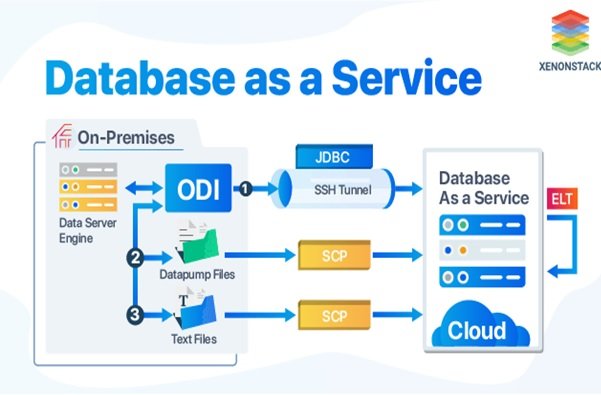Database as a Service (DBaaS) Service. The Term “database as a service,” Which Some Sources Use To Describe The Term “Managed Database,” Was First Introduced By Amazon as a relational database service nearly 12 Years Ago.
Since then, the database as a service has grown rapidly and attracted the attention of companies, with a value expected to reach $ 320 billion by 2025.
What is DBaaS?
A cloud database is a database that normally runs on a cloud computing platform. In this case, access to the database is provided as a service. In connection with this computing paradigm, there are two common deployment models. In the first case, users can run databases independently in the cloud and use a virtual machine image.
In the latter case, users can access the database service maintained and managed by the cloud database provider. Among the databases available on the cloud are SQL-based models and some NoSQL data models.
The most crucial factor that has brought this computing paradigm to the attention of companies is the high scalability and accessibility of these databases. The database service provides users with a simple, straightforward software stack of abstract concepts.
The two main methods of running a database in the cloud
As mentioned, databases are implemented on the cloud in two ways:
Virtual machine image: Cloud platforms allow users to purchase virtual machine instances for a limited time. In this case, the database can run on such virtual machines. Users can upload images of their cars to the database on which they are installed, or use ready-made pictures of the devices that have already been optimized.
Database as a Service (DBaaS): With the Database as a Service model, companies do not need to install and maintain their database. Instead, the database service provider is responsible for the installation and maintenance of the database, and the companies pay the required fee depending on the amount of service used. The above model is based on a more comprehensive software as a service (SaaS) model.
Common architecture and features
Most database services provide web consoles so the end-user can use them to prepare and configure database instances.
Database services include a database administrator component that uses an API service to control the following database items. The API service is available to end-users and allows users to perform maintenance and scaling operations on their database samples.
Typically, a software stack consists of the operating system, database, and third-party software used to manage the database. The service provider is responsible for installing, patching, and updating the software stack and ensuring the database’s overall health and performance.
Note, however, that scalability characteristics vary between vendors. Some offer automated scalability, and others enable the user to increase the scale using the API. However, scalability is not automated and depends on the final approval of the infrastructure owner.
Typically, organizations commit to 99.9% database access. For this purpose, they use approaches such as replicating and measures to deal with failure (failing), in which redundancy is the first letter. DBaaS is a cloud computing service model that provides users with a specific type of database access without configuring physical hardware, installing database software, or configuring performance.
How is DbaaS implemented?
Setting up a database involves preparing a virtual machine to run, install, and configure the database according to a set of parameters. Once a database is set up, the platform is responsible for all back-end operations to maintain its status in the best possible condition. To be precise, coordination between the database and the evolving program must automatically expand the database according to defined criteria.
What are the benefits of DBaaS?
Implementing a database is a multi-step process that includes computing, network, and storage components, properly configuring components, and installing database software.
DBaaS solutions ensure the constant availability and smooth operation of databases at peak workloads and assure IT managers that system performance will not be reduced at peak workloads.
Most database engines inherently provide security capabilities, such as data encryption without data usage, and when dialogs take place on the data, they use their own data structures and APIs.
A DBaaS solution offers organizations a variety of benefits, the most prominent of which are:
- Increase the speed of the developer’s work
- IT efficiency
- Reliability and performance of the application
- Application security
How do you choose a DBaaS?
Major cloud providers offer various DBaaS options, including relational database management systems (RDBMS), offline databases, or NoSQL.
Finding the right DBaaS provider for your company involves examining which database technologies work best for your workflow and ensuring that your provider supports that technology.
Answering the first part of this issue can be complicated, as there is no suitable DBaaS for all your applications. Transactions are always complex, and sometimes, achieving better performance involves subtlety. Here are some specific factors to consider.
Most DBaaS solutions include integrated management tools that simplify the process of configuring, monitoring, and maintaining your databases. These include login, key management, and activity tracking tools.
Using a common API call set that simplifies and standardizes the development process, various database engines can be created and managed.
FAQ
What does DBaaS stand for?
DBaaS stands for Database-as-a-Service — a managed cloud database service.
Do I need my own servers to use DBaaS?
No — DBaaS providers host the hardware and software; you only manage the database itself.
What kinds of databases can DBaaS provide?
Both relational (SQL) and non-relational (NoSQL), depending on the provider and your application needs.

